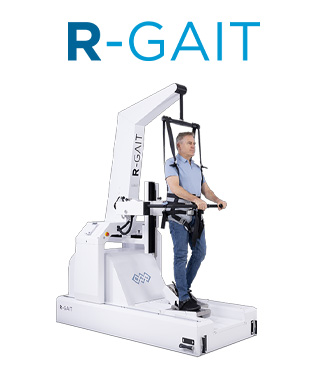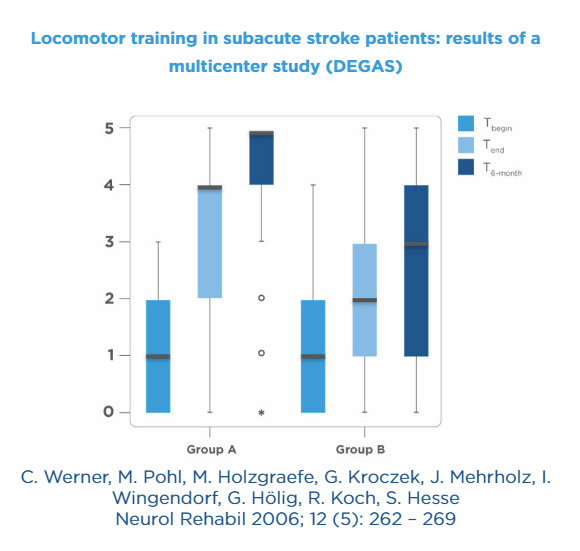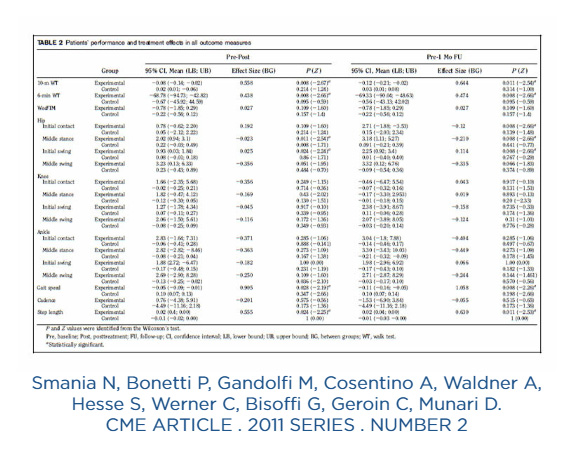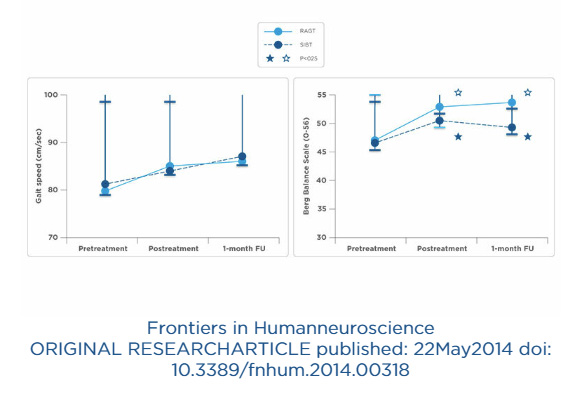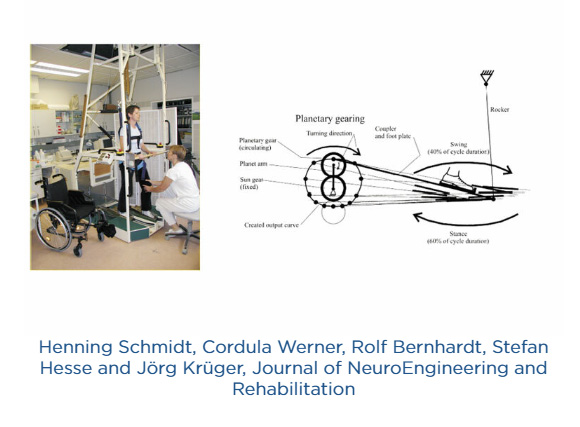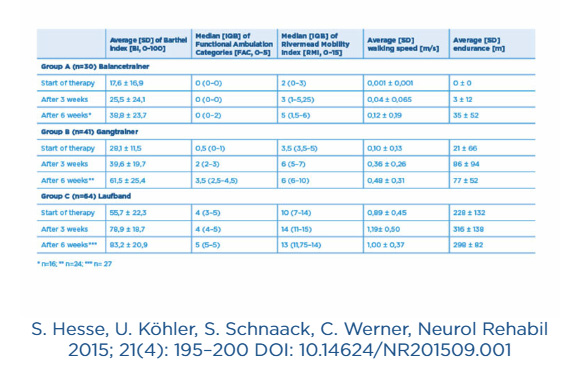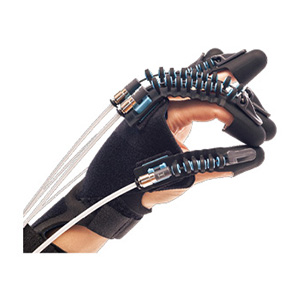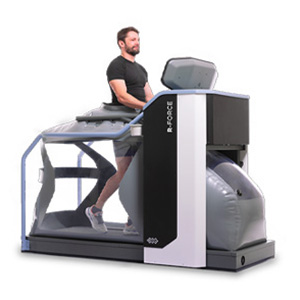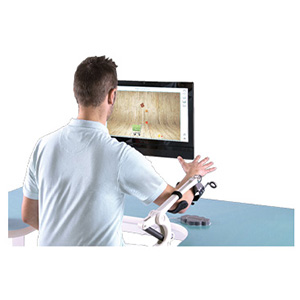
R-Gait
Description
Highlights
Operating principle & technology
Studies
Description

RESTORING GAIT AFTER NEUROLOGICAL DIAGNOSES IN ADULTS AND CHILDREN
R-Gait is an innovative end-effector robot that aims to retrain patients with neurological diseases or after a stroke to walk in a natural gait pattern. By using sensors on special foot plates, R-Gait simulates the typical foot movement and supports the extension of the metatarsophalangeal joints, thereby simulating the push-off phase of the foot as in a natural gait pattern.
Take your patient care to the next level!
Highlights
- Up to 1500 steps per session: R-Gait allows patients to complete up to 1500 steps in one session, which enables intensive and efficient gait rehabilitation.
- Time-efficient therapy: The system enables a 30-minute training session that is optimally tailored to the patient’s individual needs. Adaptation to the patient takes less than 5 minutes.
- Training for the targeted promotion of neuroplasticity and tissue adaptation: The R-Gait system uses biofeedback to enable targeted training that can promote neuroplastic changes with the help of task-oriented feedback. At the same time, body relief and the precise adjustment of gait parameters offer a gradual increase in requirements to support effective tissue adaptation.
- After the initial recovery phase: R-Gait is specifically designed for use after the initial recovery phase and is ideal for further improving mobility.
- Optimal gait patterns and physiological gait for children and adults: “Dynamic Joint Alignment Therapy” enables the correction of malpositions of the lower limbs during therapy. This promotes optimal static loading of the bone-muscle system.
- Integrated pelvic module for guided and natural movements
- Promotes natural 3D movement of the entire body
- Active participation mode allows the patient to walk independently with support
- The tablet allows the user to observe the patient from all sides
- Covers the widest range of patient heights and weights
Functionality & technology
R-Gait is an end-effector robot that teaches patients to walk again with a gait pattern that is as natural as possible. The end-effector type of gait training mimics the principle of a natural gait pattern by using foot plates equipped with sensors. These support the patient in extending the metatarsophalangeal joints and stimulate the push-off phase of the foot as in the natural gait pattern.
R-Gait promotes precisely measured gait training in a safe environment and is therefore suitable for the initial recovery phase. R-Gait is suitable for adults and children from a height of 80 cm.
Real-time gait biofeedback
Real-time gait biofeedback is used to assess biomechanical impairments in the walking behavior of patients who have suffered a stroke, spinal cord injury, cerebral palsy or other neurodegenerative diseases such as multiple sclerosis, morbus: Multiple Sclerosis, Parkinson`s Disease.
Treatment data can be stored in exportable gait reports, and both the therapist and the patient can monitor useful therapy information to track and evaluate progress.
Studies
Improved Gait After Repetitive Locomotor Training in Children with Cerebral Palsy
Patients’ demographics and pretreatment, posttreatment, and 1-mo FU performance in the 6-min walk test, the 10-m walk test, and WeeFIM
Gait rehabilitation machines based on programmable footplates
Electromechanical Gait Trainer GT I with movable footplates.
Loco-studio: an effective and efficiant locomotion group therapy approach in patients of Phase B,C and D in neuro-rehabilitation
Group therapy approach
Download the complete clinical studies
We will send you the complete clinical studies to your e-mail address.

